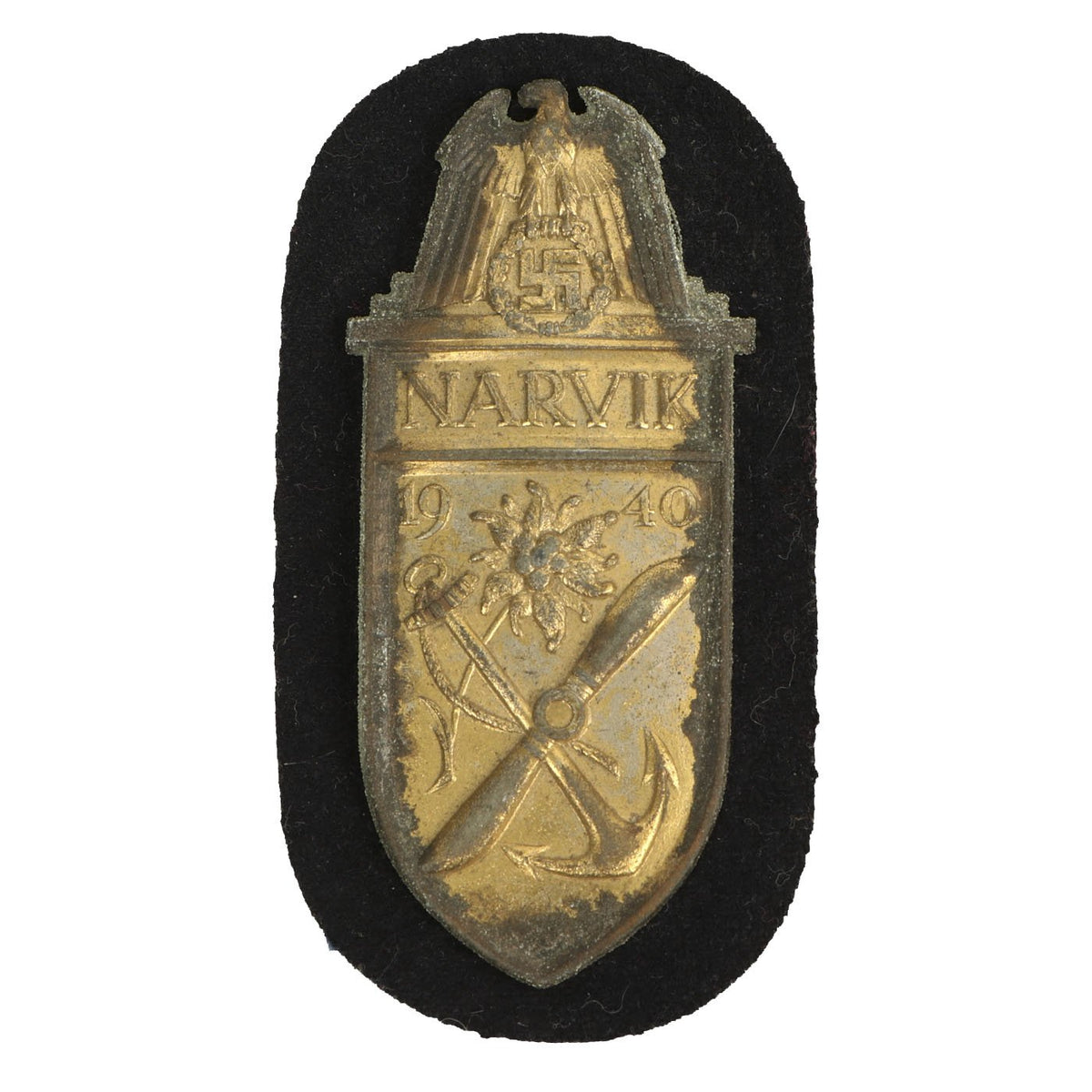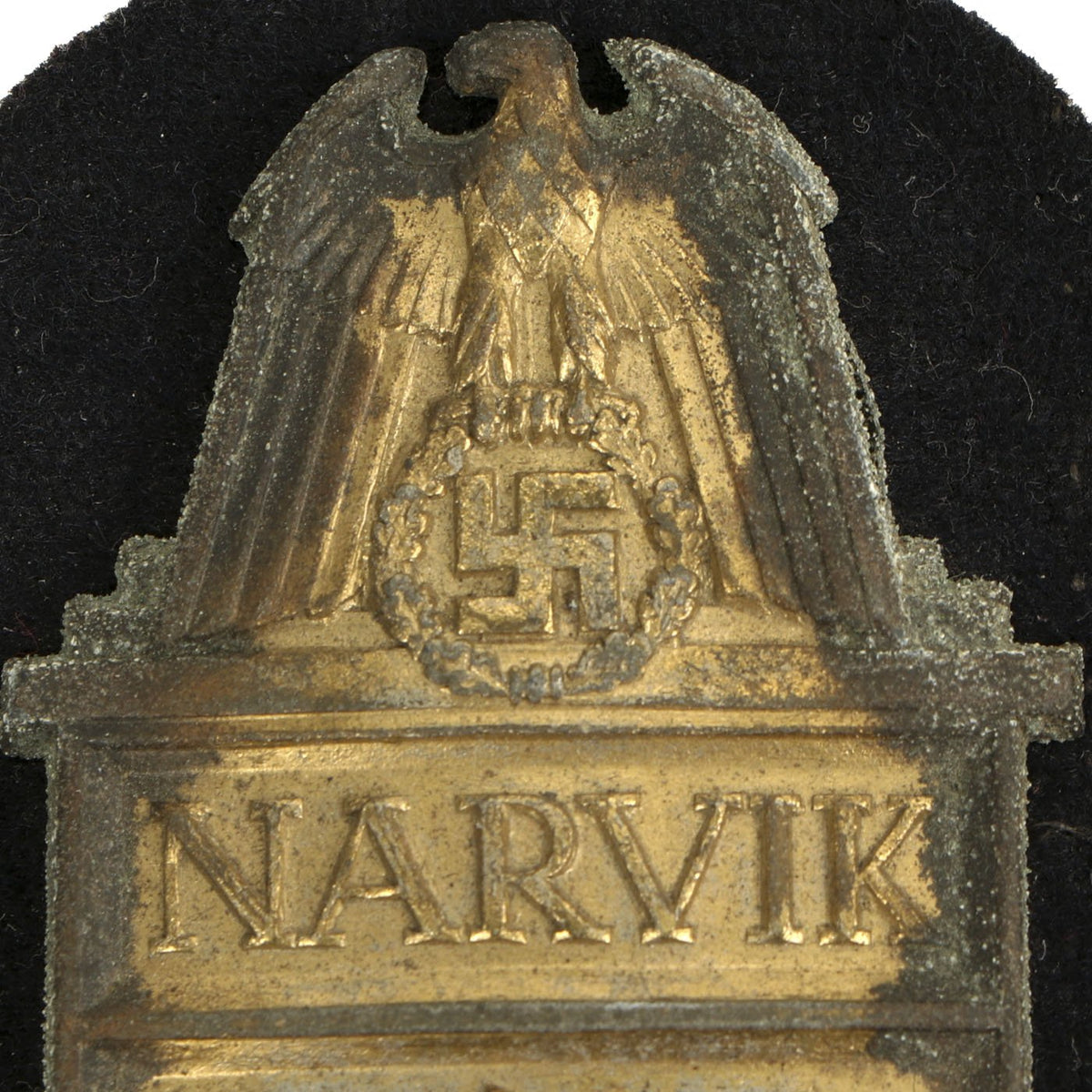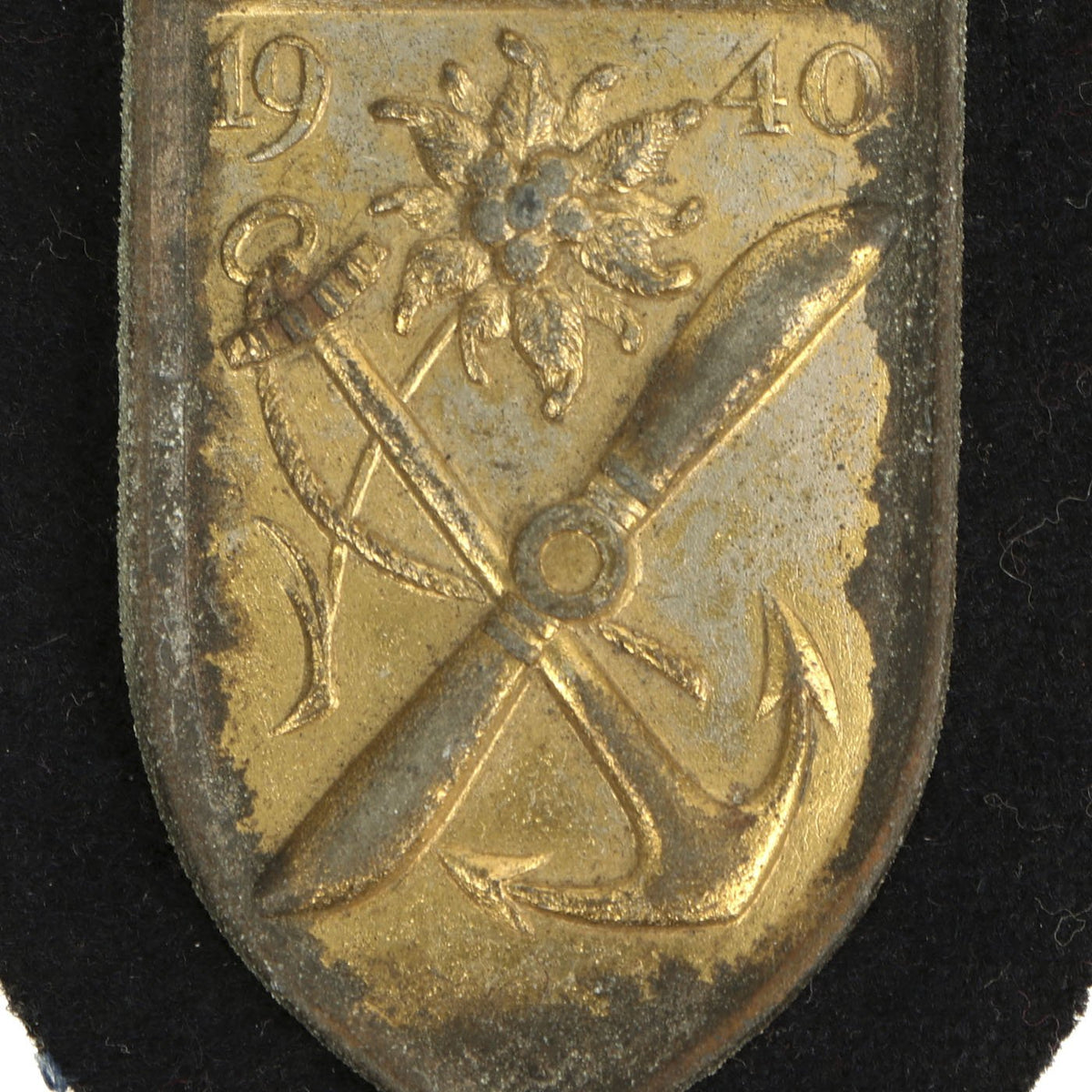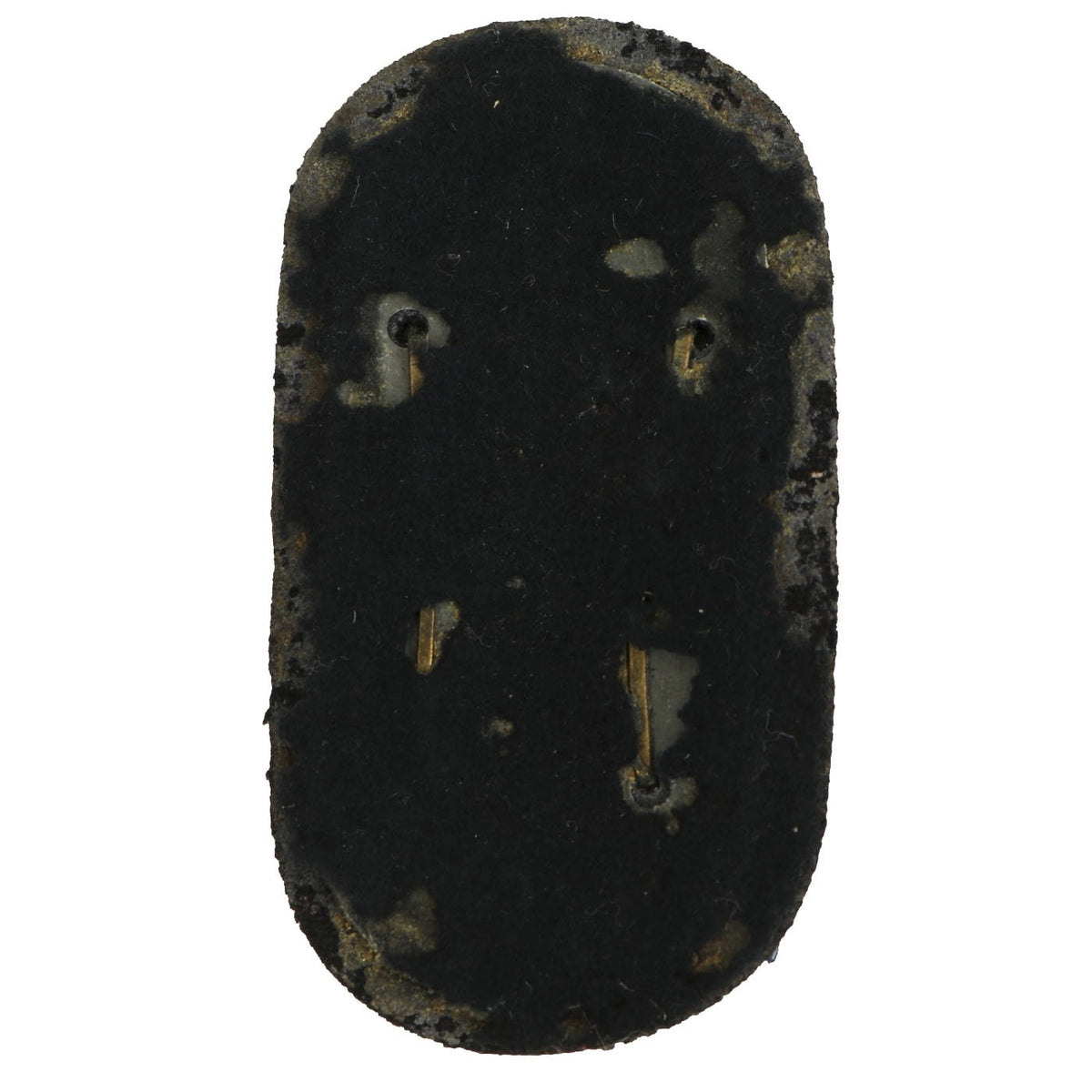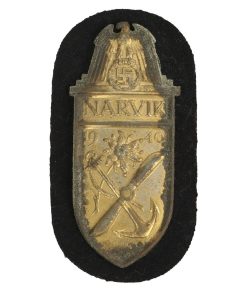Original German WWII Gold Kriegsmarine Narvik Shield Award with Backplate – Narvikschild Original Items
$ 595,00 $ 178,50
Original Item: Only One Available. The Narvik Shield (German: Narvikschild) was a World War II German military decoration awarded to all German forces that took part in the battles of Narvik between 9 April and 8 June 1940. It was instituted on 19 August 1940 by AH. The Oberkommando der Wehrmacht (OKW or Armed Forces High Command) published the order the same day. A total of 8,577 military personnel received the award. It was bestowed by General Eduard Dietl, the commander of Army Group Narvik.
This example is the Gold Washed Zinc version, which is the rare version awarded to Navy Kriegsmarine soldiers. (The Heer and Luftwaffe version was silver in color.) It still has the original backing plate attached, as well as the original black felt fabric it was issued with, which would be installed behind the badge. Unfortunately the felt covering on the backing plate does have moth damage, as shown.
The award still retains a good amount of the gold color, though it has oxidized a bit around the edges. A hard to find award, ready to display!
Designed by Professor Dr Richard Klein of Munich, the narrow shield features a pointed bottom and, at its apex, an eagle with down-swept wings clutching a laurel wreath that surrounds a swas. Below this in capital letters is written NARVIK. The body of the shield features an edelweiss (representing the Heer mountain troops), an anchor (representing the Kriegsmarine), and propeller (for the Luftwaffe). The anchor and propeller are crossed, with the edelweiss placed at the top of the X. The numbers 19 and 40 appear at the top corners of the main body of the shield.
The shield was hollow backed and stamped from sheet metal which was usually zinc. It was worn on the upper left arm of the uniform. The shield was awarded in two versions; silver-gray versions for army and Luftwaffe and a gilded (golden coloured) version for Kriegsmarine.
The Battles of Narvik:
The Battles of Narvik were fought from 9 April to 8 June 1940 as a naval battle in the Ofotfjord and as a land battle in the mountains surrounding the north Norwegian city of Narvik as part of the Norwegian Campaign of the Second World War.
The two naval battles in the Ofotfjord on 10 April and 13 April were fought between the British Royal Navy and NSDAP Germany’s Kriegsmarine, while the two-month land campaign was fought between Norwegian, French, British, and Polish troops against German mountain troops, shipwrecked Kriegsmarine sailors and German paratroopers (Fallschirmjäger) from the 7th Air Division. Although defeated at sea off Narvik, losing control of the town of Narvik and being pushed back towards the Swedish border, the Germans eventually prevailed because of the Allied evacuation from Norway in June 1940 following the Battle of France.
Narvik provided an ice-free harbour in the North Atlantic for iron ore transported by the railway from Kiruna in Sweden. Both sides in the war had an interest in securing this iron supply for themselves and denying it to the enemy, setting the stage for one of the biggest battles since the Invasion of Poland.
Prior to the German invasion, British forces had considered Narvik as a possible landing point for an expedition to help Finland in the Winter War. Such an expedition also had the potential of taking control of the Swedish mines and opening up the Baltic for the Allies.[2] French politicians were also eager to start a second front as far away from France as possible.
Fast Shipping with Professional Packaging
Thanks to our longstanding association with UPS FedEx DHL, and other major international carriers, we are able to provide a range of shipping options. Our warehouse staff is expertly trained and will wrap your products according to our exact and precise specifications. Prior to shipping, your goods will be thoroughly examined and securely secured. We ship to thousands clients each day across multiple countries. This shows how we're dedicated to be the largest retailer on the internet. Warehouses and distribution centres can be located throughout Europe as well as the USA.
Note: Orders with more than one item will be assigned a processing date depending on the item.
Before shipping before shipping, we'll conduct a thorough inspection of the items you have ordered. Today, the majority of orders will be delivered within 48 hours. The delivery time will be between 3-7 days.
Returns
The stock is dynamic and we cannot completely manage it because multiple stakeholders are involved, including our factory and warehouse. So the actual stock may alter at any time. It's possible that you may not receive your order once the order has been made.
Our policy is valid for a period of 30 days. If you don't receive the product within 30 days, we are not able to issue a refund or an exchange.
You can only return an item if it is unused and in the same state as the day you received it. You must have the item in its original packaging.
Related products
Uncategorized
Uncategorized
Uncategorized
Uncategorized
Uncategorized
Uncategorized
Uncategorized
Uncategorized
Angolan Rebel 1970s era 60mm Inert Display Mortar from Angolan Civil War Original Items
Uncategorized
Band of Brothers ORIGINAL GERMAN WWII Le. F.H. 18 10.5cm ARTILLERY PIECE Original Items
Uncategorized
Uncategorized
Uncategorized
Uncategorized
Uncategorized
Australian WWII Owen MK1 Machine Carbine SMG Custom Fabricated Replica with Sling Original Items
Uncategorized
Uncategorized
Uncategorized
Uncategorized
